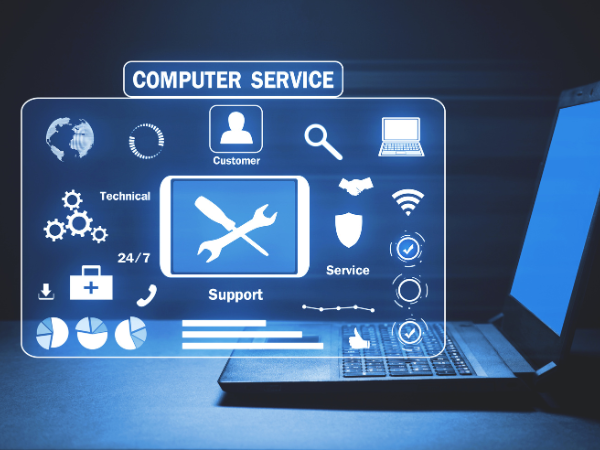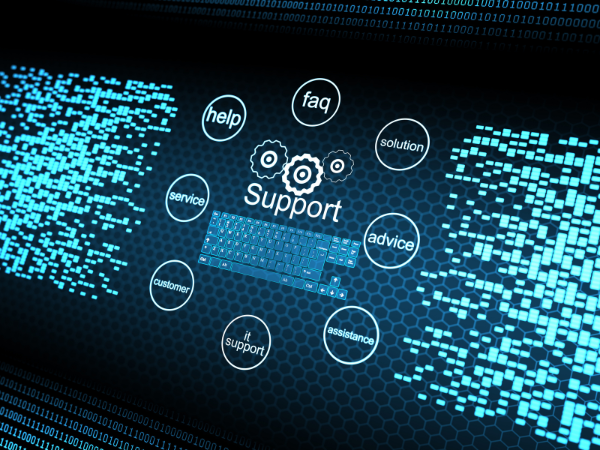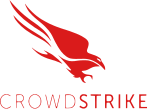Running a business is hard enough without trying to decode IT pricing. Whether you’re shopping for your first managed IT provider or wondering if you’re overpaying your current one, this guide cuts through the confusion.
Small and mid-sized businesses often struggle to understand what they should be paying for IT support. With pricing models that vary wildly and service descriptions filled with technical jargon, it’s easy to feel lost when comparing options. That’s exactly why we created this straightforward guide.
We’ve gathered real pricing data from across the industry to give you clear, actionable information. No vague estimates or outdated figures—just practical insights that help you make confident decisions about your IT support in 2025.
In the following sections, you’ll discover the actual price ranges for different service levels, understand which pricing model makes the most sense for your business, learn about hidden costs that providers rarely mention upfront, and get practical tools to calculate the true ROI of managed IT services. We’ll even share negotiation tactics that could save you thousands.
Let’s cut through the complexity and get you the information you need.

What Are Managed IT Services?
Before we talk dollars, let’s get clear on what you’re buying.
Fully Managed IT Services Think of this as your complete IT department. The provider handles everything from helpdesk support to strategic planning. Your team focuses on their work while IT runs smoothly in the background.
Co-Managed IT Services You keep some IT functions in-house while outsourcing others. Maybe you have an IT person who handles day-to-day issues, but you need help with cybersecurity or cloud infrastructure.
Which model fits your business? If you have fewer than 50 employees or no dedicated IT staff, fully managed typically makes more sense. If you have internal IT resources but need specialized expertise, co-managed might be your sweet spot.
Pricing Range Snapshot (2025)
Let’s cut to the chase. Here’s what businesses are actually paying in 2025:
Per-User Pricing:
- Basic: $110-175 per user/month
- Standard: $175-250 per user/month
- Premium: $250-400+ per user/month
Per-Device Pricing:
- Workstations: $75-150 per device/month
- Servers: $200-500 per server/month
- Network devices: $50-200 per device/month
Remember: The lowest price isn’t always the best value. We’ll explain why shortly.
Pricing Models Explained
Per-User Flat-Fee
- What it is: You pay a fixed monthly rate for each employee, regardless of how many devices they use.
- Best for: Growing companies where employees use multiple devices (laptop, phone, tablet).
- Average cost: $150-300 per user/month
- Pros: Predictable billing, scales easily with headcount changes Cons: Can be expensive for companies with many devices but few users
Per-Device
- What it is: You pay for each device (computer, server, network equipment) that needs support.
- Best for: Businesses with shared workstations or where employees don’t need multiple devices.
- Average cost:
- Workstations: $75-150/month
- Servers: $200-500/month
- Network equipment: $50-200/month
- Pros: Only pay for what you use, transparent scaling Cons: Costs can spike when adding equipment, complex to track
Tiered Packages
- What it is: Predefined service bundles (Basic, Standard, Premium) with increasing features.
- Best for: Companies that want simplicity and clear options.
- Average cost:
- Basic: $110-175 per user/month (helpdesk, basic monitoring)
- Standard: $175-250 per user/month (adds security, backup)
- Premium: $250-400+ per user/month (adds strategic planning, compliance)
- Pros: Easy to understand, predictable costs Cons: May include services you don’t need
Unbundled
- What it is: Pick and choose only the services you want.
- Best for: Businesses with unique needs or those supplementing internal IT.
- Average cost: Varies widely based on selected services
- Pros: Pay only for what you need Cons: Can become expensive quickly, harder to budget
Hybrid (User + Device)
- What it is: Base fee per user plus additional charges for servers and network equipment.
- Best for: Organizations with complex infrastructure but wanting user-based simplicity.
- Average cost: $125-200 per user plus device fees for servers/network
- Pros: Balances predictability with customization Cons: More complex billing structure
Primary Cost Drivers
Understanding these factors helps explain why prices vary so much between providers:
1. Number & Type of Users and Devices
More users and devices mean more potential support issues. Power users (like designers or developers) typically require more support than standard office workers.
2. Locations & Remote Access
Supporting multiple offices or remote workers adds complexity. Each location may need its own network infrastructure, security considerations, and occasionally on-site support.
3. Cybersecurity Maturity & Compliance Needs
Regulated industries (healthcare, financial services, legal) require additional security measures and documentation. The more robust your security needs, the higher the cost.
4. Backup, Storage & Disaster Recovery
How much data do you have? How quickly do you need to recover after an incident? More storage and faster recovery times increase costs.
5. Service Level Agreements (SLAs)
Faster response times and resolution guarantees cost more. A 1-hour response SLA costs more than a 4-hour response SLA.
6. On-site vs. Remote Support
On-site support is significantly more expensive than remote-only support. Consider how often you’ll need a technician physically present.
7. Infrastructure Complexity
Cloud-based environments generally cost less to support than on-premise systems. Hybrid environments (part cloud, part on-premise) are typically the most complex to manage.
Factors Affecting IT Support Pricing

Company Size & Growth Projections
- Small (1-25 users): Often pay more per user ($150-300) because fixed costs are spread across fewer people.
- Mid-size (26-100 users): Sweet spot for most MSPs, typically $125-250 per user.
- Large (100+ users): May see per-user costs drop to $100-200 as economies of scale kick in.
- Growth impact: If you’re planning to grow significantly, negotiate pricing tiers that reduce per-user costs as you add staff.
Infrastructure Complexity
- Cloud-first: Generally 15-30% less expensive to support than on-premise.
- On-premise: Higher support costs due to hardware maintenance and more complex troubleshooting.
- Hybrid: Often the most expensive as it combines challenges of both models.
Service Level Agreements (SLAs)
- Standard (4-8 hour response): Baseline pricing.
- Enhanced (2-4 hour response): 10-20% premium.
- Premium (1 hour response): 25-40% premium.
- After-hours support: Can add 15-30% to monthly costs if not included.
Cybersecurity Needs
Basic security is included in most packages, but advanced protection adds cost:
- Endpoint Detection & Response (EDR): $5-15 per device/month.
- Security Information & Event Management (SIEM): $10-30 per device/month.
- Compliance management (HIPAA, PCI, etc.): Can add 20-40% to base costs.
Remote Work Support
Supporting remote workers adds complexity:
- VPN management: $5-15 per user/month.
- Home office support: May add 10-20% to per-user costs.
- Device shipping & provisioning: Usually billed separately.
On-site vs. Remote Support Mix
- Remote-only: Lowest cost option.
- Occasional on-site (as needed): Typically billed hourly ($125-250/hour).
- Regular on-site (scheduled visits): Can add $500-2,000/month depending on frequency.
Backup & Disaster Recovery Requirements
- Basic backup: Included in most packages.
- Advanced backup & fast recovery: Adds $10-50 per device/month.
- Full business continuity solution: Can add $100-500+ per server/month.
Third-Party App Integrations or Legacy Systems
Supporting specialized software or legacy systems typically adds 10-30% to base costs.
What You’re Actually Paying For
When you break down that monthly fee, here’s what you’re getting:
Help-desk Support
- Ticket submission via email, phone, or portal
- Issue troubleshooting and resolution
- User account management
- Application support
Monitoring & Maintenance
- 24/7 system monitoring
- Performance optimization
- Disk space management
- Hardware health checks
Patch Management
- Operating system updates
- Application patches
- Security vulnerability fixes
- Testing before deployment
Backup & Disaster Recovery
- Regular data backups
- Backup testing and verification
- Recovery planning
- Data restoration when needed
Security Services
- Antivirus/anti-malware
- Firewall management
- Security policy enforcement
- Threat detection and response
Strategic Services
- Virtual CIO (vCIO) consulting
- Technology roadmapping
- Budgeting assistance
- Vendor management
Optional Add-ons
- VoIP phone systems
- Cloud infrastructure (Azure, AWS)
- Hardware procurement
- Project management
Checklist: Must-have vs. Nice-to-have ✓ Must-have: Help-desk, monitoring, patching, basic security, backup ✓ Nice-to-have: vCIO services, advanced security, compliance management
Cost Comparison: Break-fix vs. Managed vs. Co-managed
| Model | Typical Cost | Pros | Cons |
|---|---|---|---|
| Break-fix | $125-300/hour | • Pay only when issues occur • No monthly commitment |
• Unpredictable costs • Reactive, not proactive • Downtime costs money • No strategic planning |
| Fully Managed | $125-300/user/month | • Predictable monthly cost • Proactive maintenance • Strategic guidance • Faster resolution times |
• Higher monthly commitment • May include services you don’t need |
| Co-managed | $75-200/user/month | • Leverage existing IT staff • Fill specific expertise gaps • More control |
• Requires clear responsibility division • Communication challenges |
ROI Calculation Example: If your average employee makes $40/hour and downtime affects 20 employees for 4 hours each month, that’s $3,200 in lost productivity. Add emergency IT support costs ($200/hour × 4 hours = $800), and you’re losing $4,000/month to IT problems.
A managed service at $200/user/month for those 20 employees ($4,000) would break even if it eliminates just that one downtime incident—and typically reduces issues by 70-90%.
Hidden Costs & Cost-savings Traps

Watch out for these common surprises that aren’t always in the brochure:
Extra Charges
- Onboarding fees: One-time setup costs of $100-300 per user
- After-hours support: May cost 1.5-2× the normal rate
- Project work: Often billed separately at $150-250/hour
- Hardware/software procurement: May include 15-20% markup
Scaling Penalties
- User tier jumps: Some providers charge in bands (e.g., 1-25, 26-50), so adding one user could bump you to a higher tier
- Storage overages: Exceeding backup quotas can trigger significant fees
- Device additions: Adding servers or network equipment mid-contract often comes with premium pricing
Cybersecurity Gaps
- Basic packages may exclude: Advanced threat protection, user security training, compliance documentation
- Security incident response: Often billed at premium rates ($250-400/hour)
Contract Gotchas
- Auto-renewal clauses: Many contracts auto-renew for a full term unless cancelled 30-90 days in advance
- Early termination fees: Can be 50-100% of remaining contract value
- Minimum commitment periods: Usually 12-36 months with penalties for early exit
How to Budget & Negotiate
Gathering Comparable Quotes
- Create a standardized requirements document listing all users, devices, and specific needs
- Request line-item breakdowns, not just total costs
- Ask for references from similar-sized companies in your industry
- Compare SLAs, not just prices (a 1-hour response time vs. 4-hour makes a big difference)
Benchmarking
- National average for comprehensive managed IT: $150-250 per user/month
- Regional variations: Major metros typically 15-30% higher than rural areas
- Industry-specific: Healthcare and financial services typically pay 20-40% more due to compliance requirements
Contract Length Impact
- Month-to-month: Highest rates, but maximum flexibility
- 12-month: Standard pricing, moderate commitment
- 24-36 month: May offer 5-15% discount for longer commitment
Negotiation Tips
- Bundle services: Adding VoIP or cloud services can reduce per-service costs
- Staggered implementation: Phase in services to spread out costs
- Growth discounts: Negotiate reduced per-user rates as you add employees
- SLA flexibility: Consider less stringent SLAs for non-critical systems to reduce costs
- Quarterly reviews: Include contract language allowing adjustments based on actual usage
ROI & Value Metrics

How do you know if you’re getting your money’s worth? Track these metrics:
Technical Metrics
- Uptime percentage: Should be 99.9% or better
- Mean time to resolution: How quickly issues are resolved (industry average: 4-8 hours)
- First-call resolution rate: Percentage of issues resolved on first contact (good: >70%)
- Ticket volume trends: Should decrease over time as systems stabilize
Business Impact Metrics
- Productivity hours saved: Track reduced downtime × number of affected employees
- Strategic projects completed: IT initiatives that drive business growth
- Security incident reduction: Fewer breaches, infections, or data loss events
- Employee satisfaction: Improved ratings on IT support surveys
Financial ROI
- Cost avoidance: Preventing major outages (average cost: $5,600 per minute)
- Staff efficiency: IT handling routine tasks so your team focuses on core business
- Hardware lifecycle extension: Proper maintenance extends equipment life by 1-2 years
- Reduced recruitment costs: No need to hire, train and retain IT staff
Industry benchmark: Well-implemented managed IT services typically reduce total IT costs by 25-45% compared to in-house staffing while improving service levels by 45-65%.
Checklist: Choosing the Right MSP

Use this checklist when evaluating providers:
Scope Clarity
□ Clearly defined services and deliverables
□ Documented exclusions and limitations
□ Alignment with your specific business needs
□ Scalability as your business grows
Service Delivery
□ Documented response time guarantees
□ Resolution time expectations
□ Escalation procedures
□ After-hours support process
□ Proactive maintenance schedule
Pricing Transparency
□ All-inclusive vs. à la carte pricing structure
□ Hidden fees or potential extra charges
□ Contract term and renewal conditions
□ Price increase limitations
Provider Qualifications
□ Technical certifications (Microsoft, Cisco, etc.)
□ Industry-specific experience
□ Security credentials (CISSP, Security+)
□ Client references in your industry
□ Years in business
Reporting & Communication
□ Regular service reviews
□ Performance reporting frequency
□ Documentation standards
□ Strategic planning sessions
□ Account management structure
2025 Outlook: Trends & What’s Next

The managed IT landscape continues to evolve. Here’s what to watch for:
AI-Driven Automation
Expect to see more AI-powered support tools that can resolve common issues without human intervention. This may eventually reduce per-user costs by 10-20% for basic support.
Security-as-a-Service
With cyber threats growing more sophisticated, dedicated security services are becoming standard rather than optional. Budget for security to represent 30-40% of your IT spend.
Remote Workforce Support
As distributed teams become permanent, MSPs are developing specialized remote work packages that include home office setup, VPN management, and collaboration tools support.
Outcome-Based Pricing
Some innovative providers are moving toward guaranteeing specific business outcomes (like 99.99% uptime or zero successful breaches) rather than just selling service hours.
Pro tip: Review your IT service model every 12-18 months. Technology changes quickly, and yesterday’s perfect solution might not fit tomorrow’s challenges.
Get the IT Support You Deserve Today

You shouldn’t have to worry about your technology. The right IT partner doesn’t just fix problems—they prevent them from happening in the first place.
The Orange Crew provides transparent, predictable IT support that keeps your business running securely and your team productive. We handle the tech headaches so you can focus on what you do best—growing your business.








